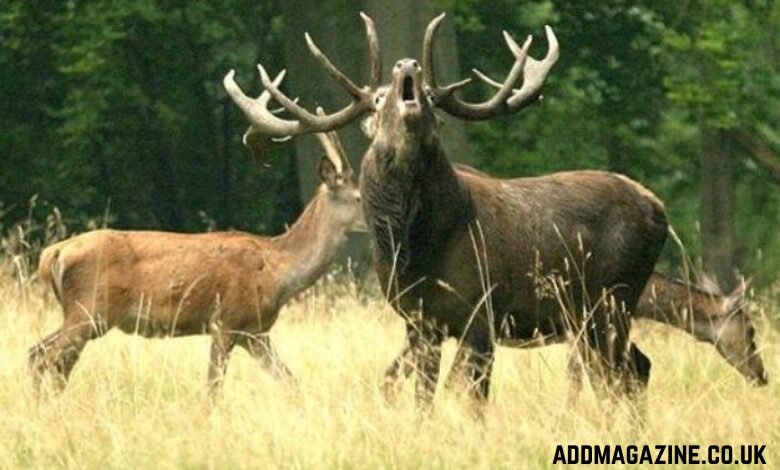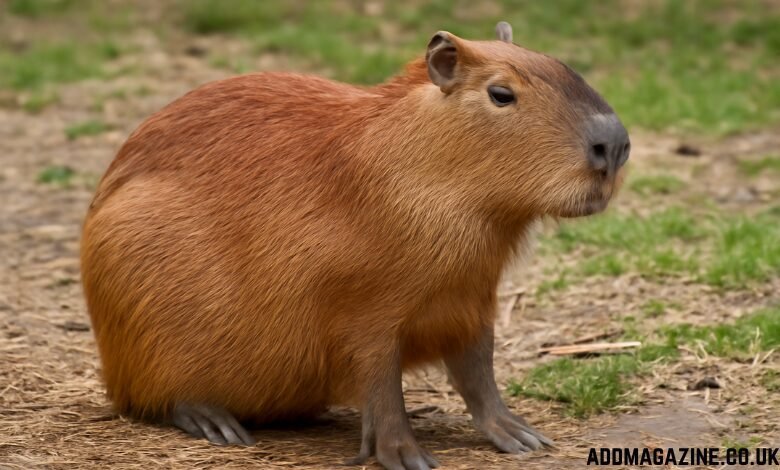Viltnemnda is an advisory body dedicated to managing wildlife and natural resources, ensuring that sustainable practices are followed in regions with high conservation value. While municipal management of wildlife and natural resources often falls under the jurisdiction of local authorities, viltnemnda plays a critical role in supporting these efforts. Local authorities are typically the first to handle day-to-day wildlife and resource management, but their work must align with the broader conservation goals and legal frameworks provided by viltnemnda.
The local authorities typically manage land use, zoning, and environmental permitting, while the viltnemnda focuses on the scientific, ecological, and ethical aspects of wildlife management. Municipal management can, therefore, face challenges in aligning local practices with the expert guidance provided by viltnemnda. For example, local development projects might interfere with wildlife corridors, habitat protection zones, or species conservation efforts. In these situations, viltnemnda plays an advisory role, offering recommendations to mitigate these conflicts.
However, the collaboration between local authorities and viltnemnda is not without its challenges:
Coordination Between Multiple Stakeholders
Municipalities, governmental bodies, and conservation organizations may have differing priorities. For instance, municipalities may prioritize economic growth through urbanization or agriculture, while viltnemnda’s primary concern is preserving the integrity of ecosystems and wildlife. This disparity can sometimes lead to conflict or delays in decision-making, making it difficult to balance both development and conservation efforts.
Funding Constraints
Effective wildlife management requires significant funding for research, habitat restoration, and monitoring programs. Municipalities often operate under tight budgetary constraints, and wildlife committees may struggle to secure the necessary resources for their initiatives. Without sufficient financial support, wildlife management strategies may be delayed or scaled down, undermining long-term conservation efforts.
Urbanization and Habitat Loss
As urban areas expand, the natural habitats of wildlife are often destroyed or fragmented. Municipal management must find a way to address the environmental impact of urban growth, while viltnemnda works to ensure that wildlife habitats are preserved in the face of development. This challenge requires innovative urban planning, such as creating green spaces and wildlife corridors, which may not always be prioritized by local governments.
Invasive Species and Ecosystem Imbalance
Municipalities are often faced with the spread of invasive species that can disrupt local ecosystems. In these cases, viltnemnda can provide valuable guidance on how to address the issue. However, local management efforts may not always align with the recommendations of wildlife committees due to practical limitations, such as resources or public opposition to interventions like controlled burns or trapping.
Public Engagement and Education
Local authorities often play a role in educating the public about wildlife conservation, but viltnemnda is essential in ensuring that this education is scientifically accurate and in line with broader conservation strategies. Overcoming misinformation or resistance to wildlife management practices requires ongoing collaboration between municipal governments, viltnemnda, and environmental organizations.
Despite these challenges, a strong relationship between municipal management and viltnemnda can result in effective wildlife conservation strategies that are balanced with the needs of local communities. Collaborative efforts can help safeguard natural resources while supporting sustainable development and enhancing the well-being of both people and wildlife.
The Establishment of Viltnemnda: History and Evolution
The concept of viltnemnda has deep historical roots, particularly in regions with strong traditions of sustainable wildlife management, like Norway. While the exact year of establishment may vary depending on the specific committee, the system of viltnemnda committees began taking shape in the late 19th to early 20th century, coinciding with the rise of formal environmental and wildlife protection laws. These committees were established to ensure that wildlife was managed effectively, with a focus on sustainable hunting practices, species protection, and habitat conservation.
In Norway, viltnemnda was officially recognized in the early 1900s, with the first committees being formed to deal with the growing concerns over hunting and the management of game species. The establishment of viltnemnda coincided with the broader global movement towards conservation that took place after the industrial revolution. As industrialization and urbanization spread across Europe, wildlife populations were increasingly under threat, leading to the implementation of more structured management systems.
Since its inception, the role of viltnemnda has evolved, particularly as the scientific understanding of ecology and wildlife management advanced. Initially, the committees focused primarily on regulating hunting practices to avoid overhunting, but over time, their responsibilities grew to include habitat conservation, species protection, and addressing broader environmental issues, such as climate change and habitat fragmentation. Today, viltnemnda continues to evolve, adapting to new challenges in wildlife conservation, such as the effects of global warming and the rise of non-native invasive species.
Timeframe of Establishment
Looking back, the establishment of viltnemnda in Norway occurred over 100 years ago. This period reflects a pivotal moment in history when conservation and resource management were beginning to take on more formal structures. From its early focus on game management, the role of viltnemnda has expanded to become an essential part of modern environmental governance. Over the years, these committees have helped shape wildlife management policies and regulations, ensuring that wildlife conservation remains a priority in the face of changing environmental conditions.
The first viltnemnda committees were formed at the local level, often working in tandem with local municipalities to create sustainable hunting and conservation practices. Over time, as the challenges of wildlife management became more complex, these committees grew in influence and scope, eventually becoming more formalized structures within the national government. The establishment of viltnemnda committees marked the beginning of a more structured and science-based approach to wildlife conservation in Norway.
The Role of Viltnemnda in Wildlife Management
The primary function of a viltnemnda is to make informed decisions regarding wildlife and natural resource management within its jurisdiction. In most cases, the committee is responsible for providing expert advice and making recommendations to local authorities or governmental bodies about how to manage wildlife populations and ecosystems effectively.
Some key areas where a viltnemnda is involved include:
Hunting Regulations
Viltnemnda often oversees hunting activities within its jurisdiction. This includes setting quotas for hunting seasons, ensuring that hunting practices follow legal and ethical standards, and monitoring the health of species populations to prevent overhunting or endangerment. The committee works closely with environmental agencies to track wildlife numbers and ensure that hunting does not negatively affect the species’ long-term survival.
Species Protection
The committee is responsible for identifying vulnerable or endangered species and creating strategies to protect them. This includes recommending protection measures, such as setting up wildlife reserves, creating breeding programs, or restricting human activity in critical habitats. By focusing on species that are at risk of extinction, viltnemnda helps prevent biodiversity loss.
Habitat Conservation
Viltnemnda also plays a role in protecting the natural habitats of wildlife. This includes monitoring deforestation, urbanization, pollution, and other environmental threats that might harm ecosystems. By advocating for better land use policies and conservation efforts, the committee ensures that wildlife populations have access to the resources they need to thrive.
Research and Data Collection
Viltnemnda supports scientific research by collecting data on wildlife populations, migratory patterns, and habitat conditions. This information is vital for making informed decisions about wildlife management strategies. By working with researchers and environmental scientists, the committee ensures that its decisions are based on the best available evidence.
Public Education and Engagement
An important aspect of viltnemnda’s role is to educate the public about wildlife conservation and responsible resource management. The committee may organize public outreach programs, educational campaigns, or workshops to raise awareness of local wildlife issues and encourage sustainable practices among residents and visitors.
Structure and Operation of Viltnemnda
The structure and operation of viltnemnda can vary depending on the country and specific legal framework in place. However, most viltnemnda committees share common features:
- Composition: Typically, viltnemnda consists of a group of appointed or elected members with expertise in various fields related to wildlife management. This may include wildlife biologists, environmental scientists, hunters, representatives from local communities, and government officials. The diversity of expertise ensures that the committee can make well-rounded decisions.
- Decision-Making Process: Viltnemnda typically operates on a consensus-based decision-making model. Decisions are made after considering scientific data, expert opinions, and public input. The committee may hold regular meetings to review reports, discuss wildlife management issues, and vote on recommendations or regulations.
- Collaboration with Other Agencies: Viltnemnda often works closely with other government bodies, such as environmental protection agencies, forestry departments, and local municipalities. This collaboration ensures that wildlife management efforts are aligned with broader environmental goals and that resources are used efficiently.
- Public Involvement: In some regions, viltnemnda also allows for public participation in decision-making processes. Local residents, hunters, and environmental groups may be invited to provide input or feedback on proposed regulations. Public hearings or consultation periods may be held to gather opinions and ensure that the decisions made by the committee reflect the needs and concerns of the community.
- Enforcement and Compliance: While viltnemnda plays an advisory and decision-making role, enforcement of wildlife regulations typically falls under the responsibility of law enforcement agencies. The committee may, however, assist in monitoring compliance and reporting violations. This collaborative effort helps ensure that regulations are effectively implemented and that wildlife populations are protected.
Key Areas of Focus for Viltnemnda
Viltnemnda typically focuses on several key areas related to wildlife and environmental conservation:
- Game Management: Many viltnemnda committees are responsible for managing game species, which includes animals that are hunted for sport or food. By setting hunting seasons, quotas, and regulations, the committee ensures that hunting does not lead to the overexploitation of species. They may also address conflicts between human activities and wildlife, such as crop damage caused by herbivores.
- Protected Areas and Wildlife Reserves: Some viltnemnda committees manage or make recommendations about the creation of protected areas and wildlife reserves. These are designated zones where human activity is restricted to safeguard fragile ecosystems and provide safe havens for wildlife to thrive.
- Invasive Species Management: Another important area of focus for viltnemnda is the management of invasive species. These are non-native species that may cause harm to local ecosystems by competing with native species for resources or introducing diseases. The committee may advise on strategies to control or eradicate invasive species to protect biodiversity.
- Monitoring and Research: Viltnemnda supports the monitoring of wildlife populations and habitats. Regular surveys and research programs are crucial for tracking the health of wildlife populations and identifying emerging threats, such as disease outbreaks or habitat degradation. This data helps the committee make timely decisions about conservation efforts.
- Community Engagement: A successful viltnemnda must engage with local communities, hunters, landowners, and other stakeholders to ensure that its policies are widely accepted and supported. Public involvement in wildlife management fosters a sense of ownership and responsibility for local ecosystems and can lead to better long-term outcomes.
Benefits of Viltnemnda
- Biodiversity Conservation: One of the primary benefits of viltnemnda is the conservation of biodiversity. By managing wildlife populations and protecting natural habitats, the committee helps ensure that future generations can enjoy diverse ecosystems.
- Sustainable Resource Use: Viltnemnda helps ensure that wildlife resources are used sustainably. This includes preventing overhunting, deforestation, and other activities that could harm wildlife populations and ecosystems. Sustainable management practices contribute to the long-term health of natural resources.
- Conflict Resolution: In areas where human-wildlife conflict is common, such as in agricultural zones or urban areas, viltnemnda can play a role in finding solutions. For example, the committee may work to mitigate crop damage by wildlife or address issues related to dangerous animal populations.
- Economic Benefits: Responsible wildlife management often has economic benefits, especially for communities that rely on hunting, ecotourism, or natural resource extraction. By ensuring that these industries are sustainable, viltnemnda helps maintain economic stability and growth.
- Public Awareness and Education: Viltnemnda helps raise public awareness about wildlife conservation and environmental issues. By engaging with communities and providing educational resources, the committee fosters a greater understanding of the importance of preserving biodiversity.
Challenges in Modern-Day Viltnemnda Operations
While viltnemnda has been effective in wildlife management for over a century, it still faces a number of challenges in today’s world. These challenges are increasingly influenced by global environmental changes and the complex nature of modern ecosystems.
- Climate Change: One of the most significant challenges faced by viltnemnda today is the impact of climate change on wildlife populations. Rising temperatures, shifting weather patterns, and altered migration routes are affecting the habitats and behaviors of many species. Viltnemnda committees must adapt their strategies to account for these changes, which requires staying informed about the latest climate science and adjusting conservation plans accordingly.
- Human-Wildlife Conflict: As human populations expand into previously undisturbed areas, conflicts between humans and wildlife are becoming more common. These conflicts often involve damage to crops, property, and even loss of human life. Viltnemnda plays a crucial role in mediating these conflicts and providing solutions that protect both wildlife and local communities.
- Biodiversity Loss: The loss of biodiversity is a growing concern worldwide, and viltnemnda is central to addressing this issue at the local level. The decline in species diversity can disrupt ecosystems, reduce genetic diversity, and make wildlife populations more vulnerable to disease and environmental change. Viltnemnda committees work to identify at-risk species and develop strategies to protect them from extinction.
- Invasive Species: Non-native species continue to pose a significant threat to local ecosystems. They can outcompete native species for resources, disrupt ecological balances, and introduce new diseases. Viltnemnda plays a role in identifying and managing invasive species to prevent them from causing long-term ecological damage.
Conclusion
The establishment of viltnemnda over a century ago marked a critical step in the development of structured wildlife management and conservation efforts. These committees were initially formed to regulate hunting, safeguard vulnerable species, and protect habitats. Today, viltnemnda continues to play a pivotal role in wildlife resource management, ensuring that sustainable practices are maintained while adapting to modern challenges such as climate change, human-wildlife conflict, and biodiversity loss.
As the world faces increasingly complex environmental issues, viltnemnda’s role is more vital than ever. These committees provide a vital bridge between science, policy, and local communities, ensuring that wildlife management is both effective and sustainable. Looking forward, viltnemnda will remain at the forefront of conservation efforts, guiding the way for the next century of responsible wildlife stewardship.




